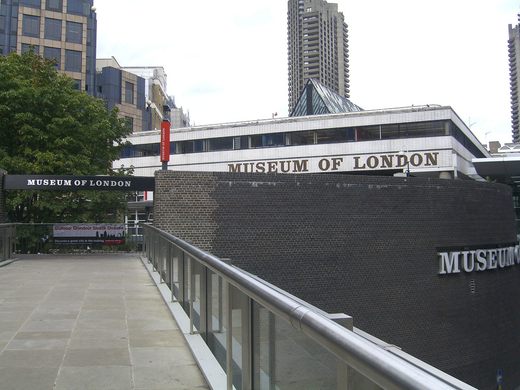Viking Tombstone
This Viking gravestone carved in a rare runic style was dug up from a London churchyard.
In 1852, a strange object was found on the site of the old graveyard of Saint Paul’s Cathedral in London, by a group of workers digging the foundations of a new warehouse. It was a grey stone slab, carved with elaborate patterns that depicted a fierce dragon-like beast and strange markings that did not resemble the somber and simple Christian gravestones that were usually being dug up.
A scholar from the British Museum was brought to the churchyard to identify the design and its runic inscriptions. It turned out that this mysterious object was in fact a tombstone that had marked a pagan Viking grave from nearly a thousand years ago. What’s more, it had been carved in the Ringerike artistic style that is rarely seen outside of Scandinavia.
The Ringerike style is believed to have originated in medieval Norway where it was used widely to decorate both runestones and tombstones. The defining features of this style are its swirling tendril-like shapes that create intricate patterns, and depictions of strange mythological creatures with the characteristics of serpents, dragons, and wolves. A few scholars have suggested the animal seen on the Ringerike tombstone from St. Paul’s Cathedral may portray a stylized lion-type animal. But most experts believe it is a depiction of a single fierce beast that combines aspects of many mythological creatures typical of pagan Norse mythology. There are also traces of old paint on the stone, suggesting the art was once brought to life with red and black hues.
The stone has been dated to the period of the rule of King Canute in the early 11th century. Canute was a Danish leader of Viking stock who managed to seize the crown of England after an invasion, going on to rule for the next two decades. The ascension of Canute brought a renewed Scandinavian influence to the south of England and great numbers of Danes and Norwegians began to settle across the country, particularly in the city of London, where many became merchants.
Although King Canute was apparently a converted Christian, he seems to have been exceptionally tolerant of the pagan Norse religion of many of his Viking subjects. In the early days of Christian England, the two belief systems were often fluid and regularly overlapped. Archeological excavations of graves from this time period suggest that many pagan believers were buried alongside Christians on consecrated ground.
The Ringerike tombstone of Saint Paul’s Cathedral may be the grave marker of one of these Viking Londoners who lived in the area during this period of religious flux. It is possible that this individual held a mixture of Christian and pagan beliefs, which is represented in the unusual design of this churchyard tomb.
Update as of November: On December 4th, 2022, the museum will be closing as it prepares to move to its new site, The West Smithfield.
Know Before You Go
The Viking tombstone can be found in the medieval gallery of the Museum of London. The museum is located next to the Barbican and can be reached by taking the tube to the station of the same name. Entrance to the museum is free, although a donation of £5 is recommended as it helps to keep the institution running. The museum opens from 10 a.m. to 6 p.m. daily. Audio guides, guided tours, and talks are available for all of the galleries of the museum.






















Follow us on Twitter to get the latest on the world's hidden wonders.
Like us on Facebook to get the latest on the world's hidden wonders.
Follow us on Twitter Like us on Facebook